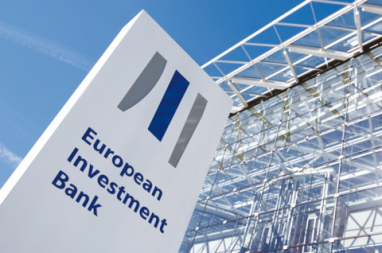- Nike Killshot KD 10 Opening Night , Женские кроссовки nike Killshot air force 1 — цена 1200 грн в каталоге Кроссовки ✓ Купить женские вещи по доступной цене на Шафе , Украина #129154822
- air jordan 1 los angeles , Air Jordan 1 Mid Black Grey Red
- nike air jordan 1 mid outlet
- SBD - You will love The Nike Air VaporMax Run Utility if - 700 Release Date - Nike Air Zoom Pegasus 36 Cody Hudson Yellow CI1723
- Панама adidas bucket - Ransom by adidas Bluff Lo 'Fairway' - IetpShops
- Air Jordan 1 Satin Black Toe CD0461 016 2019 Release Date 4
- Miles Morales Shameik Moore Air Jordan 1 Spider Verse
- kids air jordan
- air force 1 shadow
- Air Jordan 1 Paisley Bandana Release Date
- Home
- News and analysis
- Info hubs
- Events
- Video
- Case Studies
- About us
- Magazine
- Advertising
Produced for the industry by the Association for Consultancy and Engineering
Opinion
Will UK still have access to the European Investment Bank after Brexit?

Many of the UK’s recent infrastructure projects have benefited from funding by the European Investment Bank. After Brexit however, there are questions over whether this source of finance will still be available, says Costanza Russo.
The European Investment Bank (EIB) is the world’s largest multilateral lending institution, borrowing and lending twice as much as the World Bank. Its main and primary purpose is to promote the balanced economic development of the EU member states. The 28 member states of the European Union are the shareholders of the EIB.
To achieve its purpose, the EIB raises funds through bond issues on the world’s capital markets, and lends them long-term and on a non-profit basis for technically and financially viable projects deemed likely to promote economic development. There is no subsidy from the EIB nor is any taxpayer funding required. The EIB raises its funds on the strength of the rating accorded to it by virtue of the capital provided (mostly subscribed rather than paid-up) by the member states.
Most of the EIB’s investment is within the member states and for infrastructure development projects. There are very few recent major European infrastructure projects in which the bank has not been involved. Since the UK became a shareholder in 1973, the EIB has heavily invested in the UK in a variety of sectors ranging from transport, energy, environment and education to social housing, health, and technical innovation and, through UK banks, small and medium-sized businesses.
Focusing on UK investment in particular, the EIB has been a key financier in the Channel tunnel, Crossrail, the M25 extension, the second Severn crossing, the Jubilee Line extension to the London Underground network, the Heathrow Express and London to Dover fast rail links, as well as in smaller road, rail, port and airport, energy, hospital and school projects.
In 2015, EIB financing committed to the UK amounted to nearly €8bn, including more than €400m for the expansion of Aberdeen and Liverpool ports, €700m for social housing in Northern Ireland and in London, more than €525m for the Caithness Coast wind farm, and €260m to Swansea and Oxford universities for research and improved teaching facilities.
Furthermore, the EIB has been particularly active in the environmental field. In the early days of privatisation, the UK water industry secured from the EIB most of the external finance to bring Britain’s rivers, beaches and water supplies up to the best European standards.
EIB’s statute, which is part of the Treaty on the European Union and the Treaty of the Functioning of the European Union, does not provide a mechanism or any consequences following a member state’s exit. Consequently, both the withdrawal and the continued participation in the EIB would be a matter to be negotiated. Any continued participation of the UK in the EIB would certainly require treaty amendments and therefore the unanimous consent of the other 27 member states.
Since the UK referendum, the EIB has confirmed that, for the time being, “the EIB’s shareholders have not requested the Bank to change its approach to operations in the UK”. Therefore, until further resolution of the member states on the future relationship of the UK with the EIB, the EIB will continue to fund UK projects. Importantly, financing of a number of projects has been agreed even after the referendum. The EIB has agreed to provide £21m for investment by Hyperoptic to provide super-fast broadband to more than half a million homes across the UK.
Importantly, the projects that have already been funded should not be impacted by the effects of the referendum as in general EIB loan agreements do not provide for prepayment clauses in the event of a member state not being any more part of the EIB.
Although it is still premature to speculate on the impact of the referendum result on the EIB without having any clarity on timing and conditions of any withdrawal agreement, the EIB’s future relationship with the UK government, and its future engagement to support long-term investment in the UK, will be central to understanding the real impact of Brexit on EIB’s role in the development of infrastructure projects in the UK.
It is anticipated that once Brexit occurs and the UK leaves the EU, the UK will relinquish its 16% shareholding in the EIB. Other arrangements will undoubtedly be considered.
Even if the UK withdraws from the EIB, UK projects may still benefit from EIB funding as the EIB is permitted to fund projects outside the EU. For example, the EIB has been active in funding projects in the European Free Trade Area countries since 1994 and has a mandate for €4.8bn to 2020 for funding of projects in certain states in Eastern Europe that are not members of the EU. Funding for projects in such regions is significant – although amounting to far less than the funding received by shareholding countries. On this basis, the UK projects’ access to EIB funding can be expected to dramatically decline unless an ad hoc agreement is negotiated between the UK and the other 27 EU countries.
Costanza Russo is a corporate partner at the law firm, Faegre Baker Daniels.





